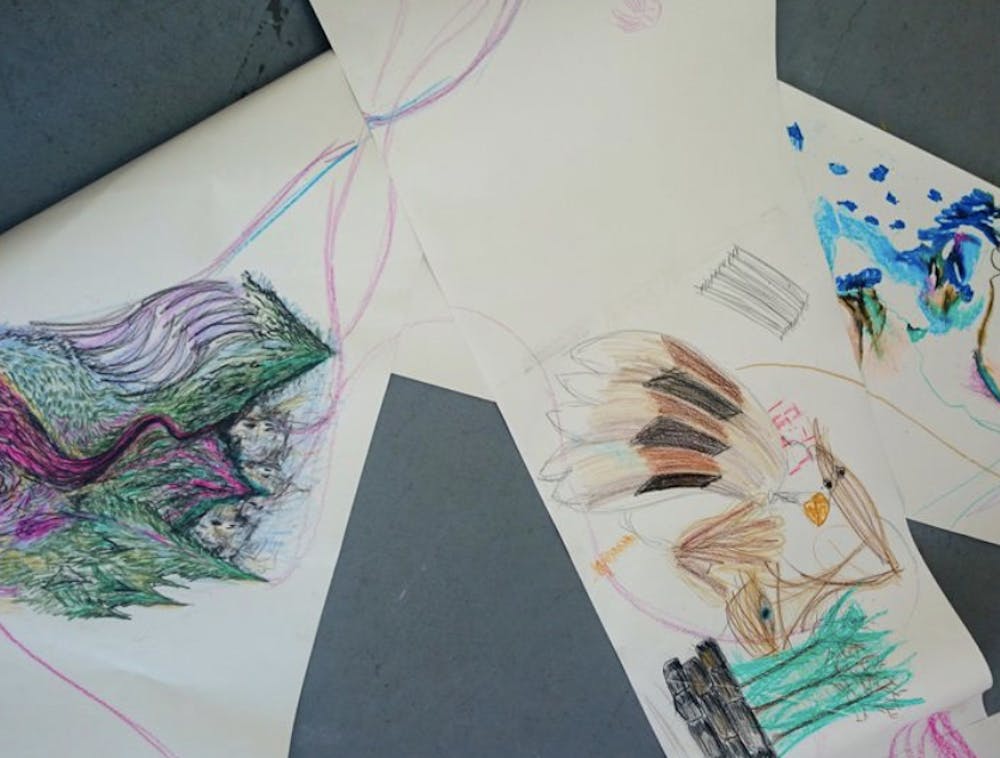Close your eyes and tell me about your dream from last night. Don’t think about it yet — just picture it. What do you see? How do you feel?
Each Sunday morning Jan. 17 – March 7, Susan Webb, M.D., hosts a Women’s Social Dreaming Matrix, which is sponsored by the Laboratory for Social Choreography at Duke University and the Center for Social Dreaming. Webb is a psychiatrist and trained psychoanalyst, and has been working with individual patient’s dreams for over 20 years. This matrix, however, shows the relevance of dreams on a societal scale.
The practice of social dreaming was developed in the 1980s by social psychologist Gordon Lawerence at the Tavistock Clinic in London. Psychologists have analyzed dreams for centuries — most notably Freud’s hyper-phallic “Interpretation of Dreams” — but the matrix extends beyond analysis and focuses on connection. Webb reveals how, through the matrix, dreams can be useful within a group of people.
“We're not concerned with any meanings of any particular dream about any particular person,” Webb said in a virtual interview. “We're interested in the dream and not the dreamer. And we're interested in the dream as a vehicle or a vessel for this information from our collective unconscious to come through.”
Webb first participated in “mixed” matrices, in which both men and women share their dreams. The psychoanalyst noticed, however, that there was an absence of sexual and personal themes in these matrices. She considered the potential of a women’s social dreaming matrix — a safe space for women to share their voice — and tested the idea over the summer.
“It was immediately apparent that women do share these themes in a group of other women, that they do hold back in mixed matrices,” Webb said. “And I noticed that it had the potential to really empower women to give voice to experiences, to concerns, to dreams, to the experience of being a woman in the world.”
The first 50 minutes of the matrix are spent in the dreaming portion, in which participants share dreams and free associate to others’ dreams. It begins with a meditative moment, a chance to break free from the conscious mind and enter into the reverie of the dreaming state. Once one shares her dream, one thought flows into the next and associations begin to form a tapestry of memories and subconscious thoughts.
“In a classical psychoanalysis, a person would lie on a couch, share their dreams, and then just free associate, or say what comes to mind,” Webb said. “And it doesn't have to make sense, it doesn't have to be logical or sequential. You just say what comes to mind. And through the free associations of a person, you start to weave together themes. You make links, you make connections and you create meaning.”
After this surreal session, there is a 20-minute reflection period in which these connections are made: participants re-enter cognitive thinking and discuss the links between their associations and the themes that arose in their dreams. This analysis and interpretation period, though shorter than the dreaming portion, is undoubtedly important, as it presents new perspectives and helps unleash creativity.
As it opens one’s mind, the matrix helps accomplish Webb’s goal of promoting general wellbeing. Mental and physical health are intrinsically linked: improving one can benefit from — and may be dependent on — improving the other. Up until recently, however, Western medicine has taught us otherwise.
“The way the body and mind are conceptualized in Western medical training are as very separate and distinct,” Webb said. “So it's not really considered that the gut is connected to the heart, is connected to the brain, is connected to the endocrine system. Western medicine teaches that these are all individual entities.”
When doctors practice under the notion that health is a divided science, the field focuses on finding diseases rather than preventing them. It’s not that the Western model necessarily looks down on prevention techniques. They’re just not as profitable.
“Capitalism, regrettably, drives a lot of the medical model,” Webb said. “Specialists make more money, specialists do more procedures, and you have to have a disease for a drug to be relevant. So disease model medicine, instead of wellness model medicine, is the prevailing model in the U.S. in particular, because you have to have diseases to spend money on drugs.”
Throughout her practice, Webb found that traditional methods of psychiatric medicine — antidepressant drugs, for example — were not effective for most patients. They may be a partial answer, but achieving wellness must be approached from multiple dimensions of a person’s being. And these dimensions vary from person to person; there is no one-size-fits-all solution, so it is imperative that psychiatrists and health care providers view each patient holistically. Solutions may involve medications, but they may also require movement. They may require opening up your mind. They may need dreaming.
Get The Chronicle straight to your inbox
Signup for our weekly newsletter. Cancel at any time.

